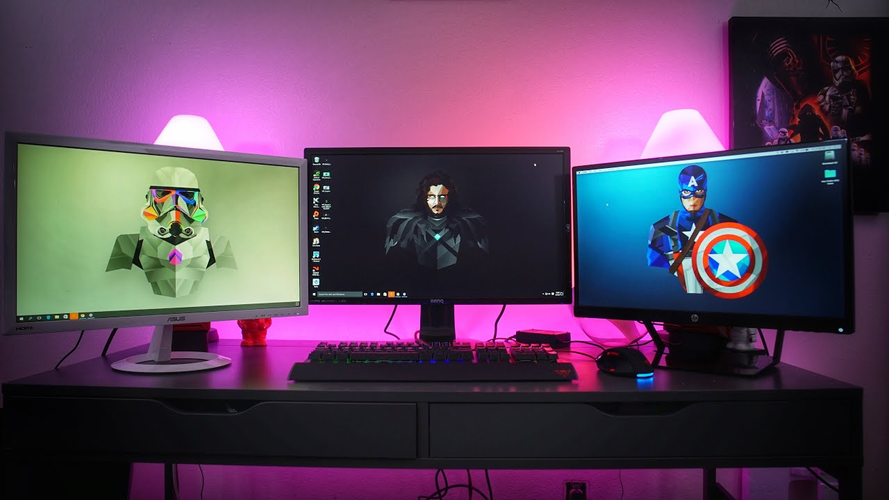When you’re shopping for a TV, choosing the screen’s size is quite simple: the larger, the better.
However, choosing your monitor’s size can be challenging. Gamers need to be following up with the entire picture, so they must sit up close to the screen.
If the screen is too wide, gamers would lose focus and suffer through eye fatigue. On the other hand, if the screen is too small, they might miss some crucial details, causing them to lose their game.
In this article, you’ll know how to choose the best screen size based on your viewing distance and preferred resolution. Make sure you don’t miss it!
Short Answer
If you have a short viewing distance, a 24-inch monitor with a 1080p display is your go-to option. If you enjoy a bit longer viewing distance, you can opt for a 27-inch screen with a 1440p resolution.
Aspects to Consider
You should consider two things when picking the best screen size: viewing distance and screen’s resolution.
Viewing Distance
You may ask: “how can the viewing distance affect your gaming experience?”
It’d be best if you adjust the screen size to your home-gaming setup.
If you’re a competitive gamer, you need to be about 3-feet away from your screen to enjoy an excellent gaming experience. With such a short distance, your best option is a 24-inch screen. Otherwise, choosing larger options will put a lot of strain on your eyes.
Resolution
Resolution is one of the essential aspects for pro gamers because if it weren’t good enough, they wouldn’t have that mind-blowing gaming experience, which makes them feel like the main characters of the game.
Another rule of choosing a monitor’s size is that large screens should have high resolution.
For instance, if you had a suitable viewing distance and decided to buy a 34-inch screen, the resolution shouldn’t be less than 4k (full HD).
Also, if you choose a 24-inch display, it’s not recommended that you go for a 4k resolution because the high resolution will slow down the game, as it’ll be too heavy on the graphic card.
The Best Monitor Size for Gaming
21-inch Monitors
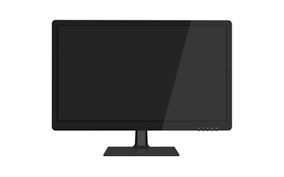
As a beginner, you won’t mind settling for such a small screen, but when things get heated, you’ll want more.
If you possess a 21-inch screen, you should sit less than 3-feet away. Most of these screens come with a 1080p resolution, which will give you a good display, yet it might bring down the refresh rate and responsiveness, leading to your loss.
The best thing about 21-inch monitors is that you can get them at $100, like the BenQ GW2280 and the HP 22ER monitors.
24-inch Monitors
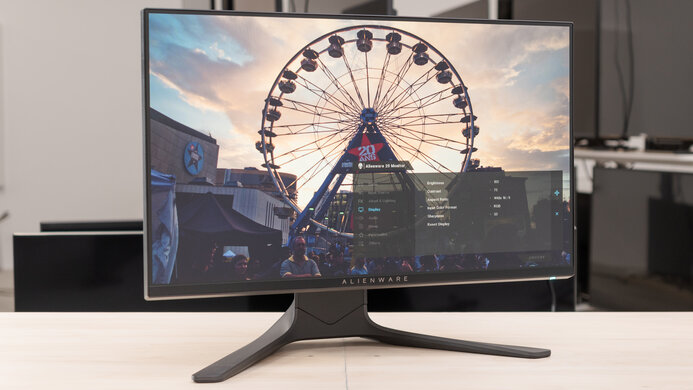
If you’re a desk-gamer and 3-feet away from your screen, a 24-inch gaming monitor will go perfectly with your home setup. It comes with 1080p-resolution and sometimes 1440p.
The ideal resolution for the 24-inch screen is 1080p, as a higher resolution might slow down the game. Also, most gamers describe this screen size as the most comfortable because they can visualize the entire screen.
The 24-inch screen is suitable for viewing the on-screen mini-maps, which don’t require much productivity.
You might find 24-inch screens that support 4k full HD, but at that moment, you need to remember our golden rule: “when the resolution is too high, the responsiveness is too low.”
27-inch Monitors
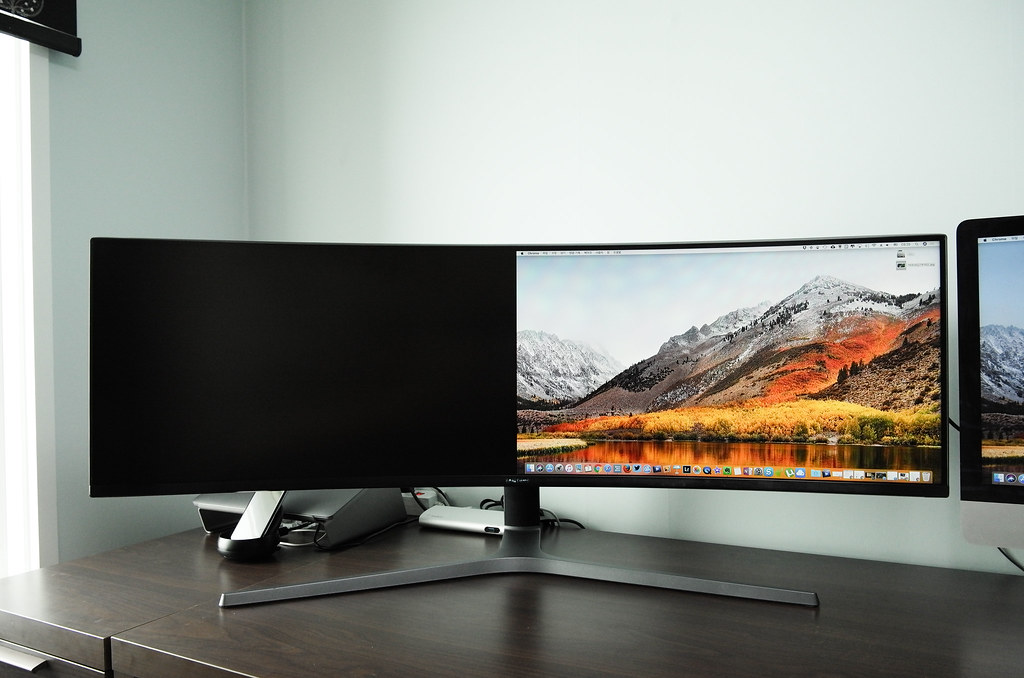
The QHD screen of the 27-inch gaming monitors is the sweet spot for many pro gamers. If you get one, try to sit about 3 to 4-feet away from the screen to visualize the entire image. If you sat closer than 3-feet, you wouldn’t be able to follow up with the game events.
Many monitors supporting the 1440p resolution come with a 144-Hz refresh rate, which is good enough to play games like The Witcher 3 without causing any latency.
27-inch screens can support 4k, but it’s too heavy on the graphics card, causing lower refresh rates.
32-inch Monitors
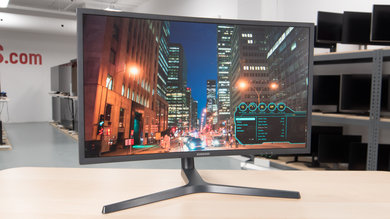
If you plan to go for a 32-inch screen, you should know that you might need to hang it up, as you can’t be closer than 5-feet to this screen.
32-inch screens have 4k resolution with relatively high refresh rates, offering you high-quality gaming experience. Moreover, the screen is big enough to allow multiplayer games.
Professional gamers do not recommend buying a 32-inch display with a 1080p resolution because the pixelated image is a bit distracting to human eyes.
Nevertheless, sitting too close to the display drives the players to move their heads and eyes a lot, contributing to their fatigue.
Ultra-Wide Monitors
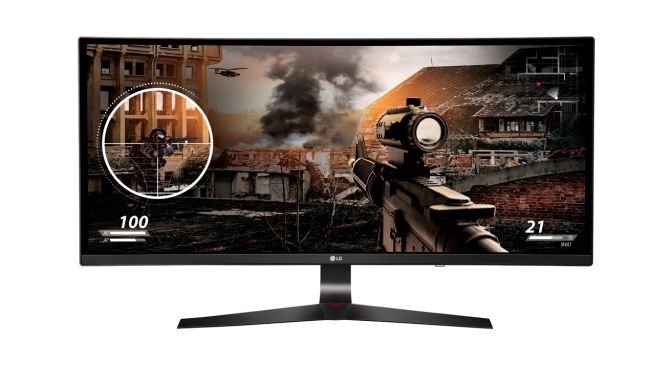
Ultra-wide monitors usually revolve around 34-inch displays, which are the best for high-productivity titles like racing games. With such a big screen, you can open several windows and play multiplayer games.
As the screen is large, try to sit a little further than usual. Furthermore, 34-inch monitors are large enough to allow some curvature in their display. The previous feature makes the players feel like they’re the hero of the game.
The screen resolution is as good as a 1080p 24-inch screen, which is about 109 PPI.
Dual Monitors
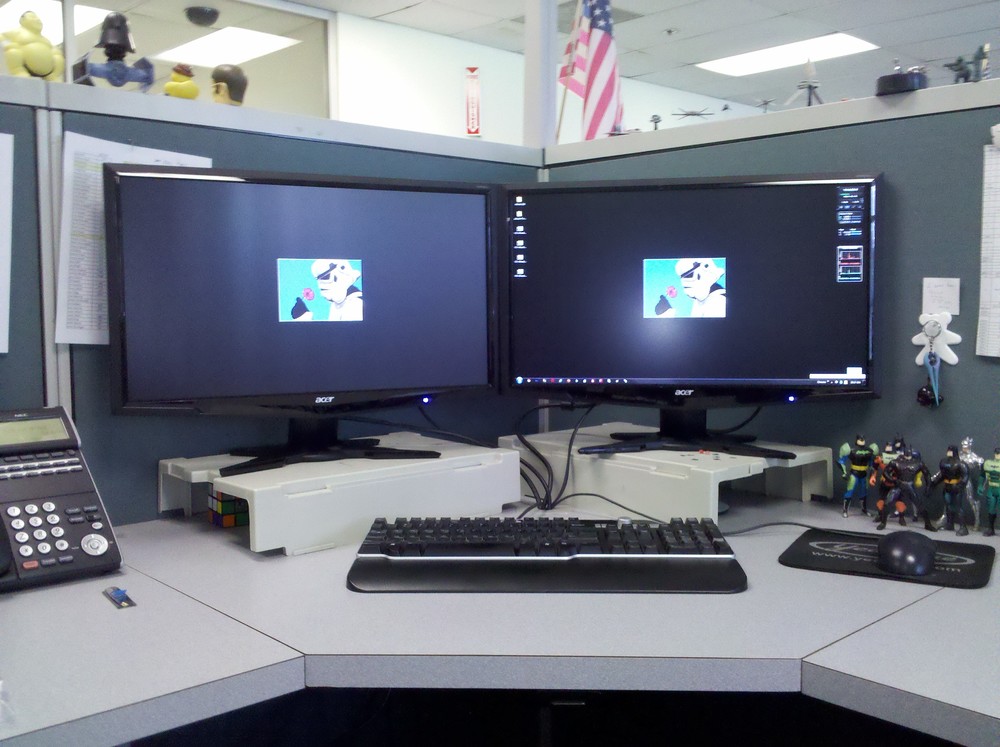
Having dual monitors makes a lot of sense if you want to open a lot of tabs at the same time. It best suits designers and programmers, but I’m not sure if it’s a viable option for professional gamers.
Gamers need to be focused at all times and picture the entire game, but multiple screens will be a distraction, as they will need to move their eyes and heads to keep all monitors within their sight range.
If you want to open several windows while playing, consider a large screen with a reliable processor, not dual monitors.
Final Thoughts
There’s no such thing as a perfect screen size because there’s a lot of variables in this equation.
Firstly, you need to match your options with your budget.
Secondly, if you’ll be placing the screen on a desk, then a 24-inch display with 1080p resolution is your best option because of the short viewing distance. As your viewing distance gets longer, you can opt for a larger screen.
Finally, you’ve to choose a better resolution if you want to buy a large screen without negatively impacting your response times and refresh rates.

